
-
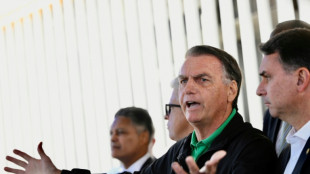 Brazil Congress passes bill to cut Bolsonaro prison term
Brazil Congress passes bill to cut Bolsonaro prison term
-
Cricket Australia boss slams technology 'howler' in Ashes Test

-
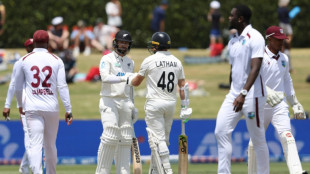 New Zealand 83-0 at lunch on day one of third West Indies Test
New Zealand 83-0 at lunch on day one of third West Indies Test
-
Ecuadorean footballer Mario Pineida shot and killed

-
 US government admits liability in deadly DC air collision
US government admits liability in deadly DC air collision
-
Ex-podcaster Dan Bongino stepping down as deputy FBI director

-
 Real Madrid scrape past third-tier Talavera in Spanish Cup
Real Madrid scrape past third-tier Talavera in Spanish Cup
-
Hunt for US college mass shooter drags into fifth day
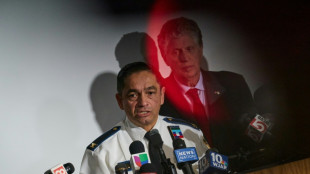
-
 Cherki inspires Man City, Newcastle strike late to reach League Cup semis
Cherki inspires Man City, Newcastle strike late to reach League Cup semis
-
Barcelona, Lyon and Chelsea reach Women's Champions League quarters

-
 Venezuela reacts defiantly to US oil blockade, claims exports unaffected
Venezuela reacts defiantly to US oil blockade, claims exports unaffected
-
Nasdaq tumbles on renewed angst over AI building boom
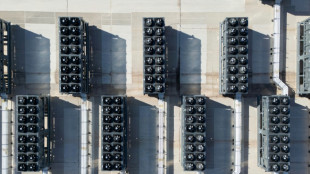
-
 S.Africa expels Kenyans working on US Afrikaner 'refugee' applications
S.Africa expels Kenyans working on US Afrikaner 'refugee' applications
-
US Congress ends Syria sanctions
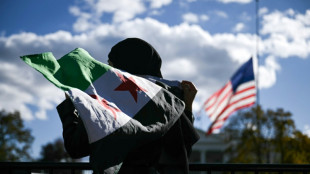
-
 Cherki inspires Man City cruise into League Cup semis
Cherki inspires Man City cruise into League Cup semis
-
Billionaire Trump nominee confirmed to lead NASA amid Moon race
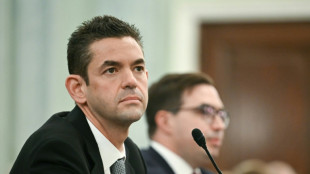
-
 Mahomes undergoes surgery, could return for 2026 opener: Chiefs
Mahomes undergoes surgery, could return for 2026 opener: Chiefs
-
Melania Trump steps into spotlight in Amazon film trailer

-
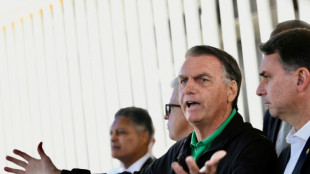 Brazil Senate advances bill that could cut Bolsonaro jail term
Brazil Senate advances bill that could cut Bolsonaro jail term
-
Safonov hero as PSG beat Flamengo in Intercontinental Cup

-
 Oscars to stream exclusively on YouTube from 2029
Oscars to stream exclusively on YouTube from 2029
-
Oscars to stream exclusively on YouTube from 2029: Academy

-
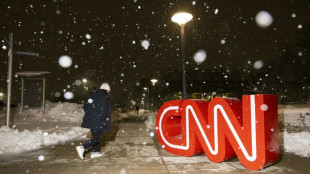 CNN's future unclear as Trump applies pressure
CNN's future unclear as Trump applies pressure
-
Brazil threatens to walk if EU delays Mercosur deal

-
 Zelensky says Russia preparing for new 'year of war'
Zelensky says Russia preparing for new 'year of war'
-
Rob Reiner's son appears in court over parents' murder

-
 US Congress passes defense bill defying Trump anti-Europe rhetoric
US Congress passes defense bill defying Trump anti-Europe rhetoric
-
Three Russia-themed anti-war films shortlisted for Oscars

-
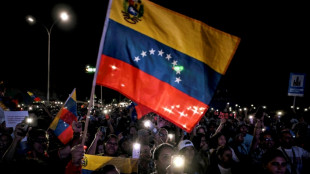 US oil blockade of Venezuela: what we know
US oil blockade of Venezuela: what we know
-
Palace boss Glasner says contract talks on hold due to hectic schedule

-
 Netflix to launch FIFA World Cup video game
Netflix to launch FIFA World Cup video game
-
Venezuela says oil exports continue normally despite Trump 'blockade'

-
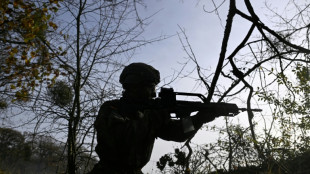 German MPs approve 50 bn euros in military purchases
German MPs approve 50 bn euros in military purchases
-
India v South Africa 4th T20 abandoned due to fog
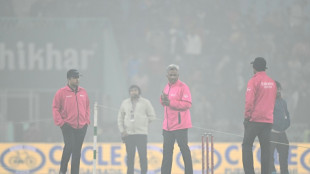
-
 Hydrogen plays part in global warming: study
Hydrogen plays part in global warming: study
-
EU's Mercosur trade deal hits French, Italian roadblock
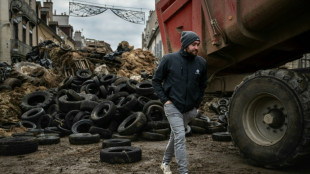
-
 What next for Belarus after US deal on prisoners, sanctions?
What next for Belarus after US deal on prisoners, sanctions?
-
Brazil Senate debates bill that could slash Bolsonaro jail term
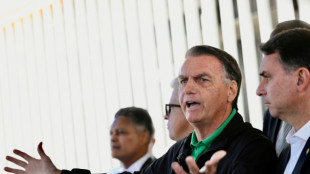
-
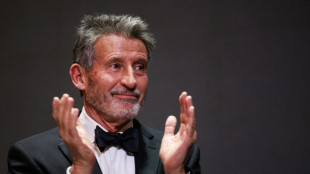 Coe shares 'frustration' over marathon record despite Kenyan's doping ban
Coe shares 'frustration' over marathon record despite Kenyan's doping ban
-
Stolen Bruce Lee statue 'returns' to Bosnia town
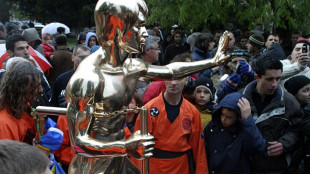
-
 Veteran Suarez signs new Inter Miami contract
Veteran Suarez signs new Inter Miami contract
-
Warner Bros rejects Paramount bid, sticks with Netflix
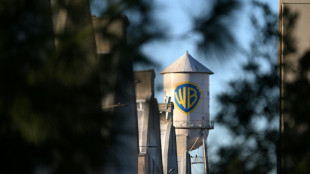
-
 Crude prices surge after Trump orders Venezuela oil blockade
Crude prices surge after Trump orders Venezuela oil blockade
-
Balkan nations offer lessons on handling cow virus sowing turmoil
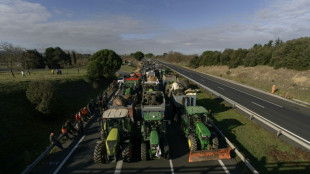
-
 French readers lap up Sarkozy's prison diaries
French readers lap up Sarkozy's prison diaries
-
UK PM warns Abramovich 'clock is ticking' over Chelsea sale fund

-
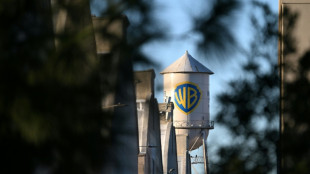 Warner Bros. Discovery rejects Paramount bid
Warner Bros. Discovery rejects Paramount bid
-
Winners of 2026 World Cup to pocket $50 million in prize money
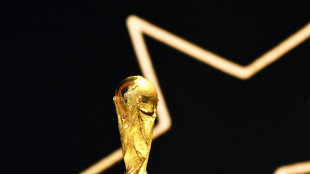
-
 World no. 1 Alcaraz ends 'incredible ride' with coach Ferrero
World no. 1 Alcaraz ends 'incredible ride' with coach Ferrero
-
World number one Alcaraz announces 'difficult' split with coach Ferrero


High-tech race to map Ukraine's damaged historic buildings
Many of Ukraine's historic monuments have been destroyed in the three months since Russia invaded, but cultural experts are working to conserve their memory using cutting-edge technology and 3D scans.
One of them is volunteer French engineer Emmanuel Durand, a specialist in 3D data acquisition, who is assisting a bevy of architects, engineers, historic building experts and a museum director to record buildings in Kyiv, Lviv, Chernigiv and Kharkiv.
Durand steps over a jumbled pile of beams and crunches over the rubble that was once Kharkiv's 19th-century fire station.
He plants his laser scanner, a sort of tripod with a pivoting head, in a strategic corner of the severely damaged building.
The redbrick fire station and its watchtower, built in 1887, are a monument to Kharkiv's industrial revolution.
Durand's gadget records the building from all angles.
"The scanner records 500,000 points per second. We'll get 10 million points from this location. Then we'll change location and go round the whole building, outside and inside. A billion points in all," he explains.
At the end of the day, Durand assembles all the data on a computer "like the pieces of a jigsaw" to digitally reconstruct the building.
The result is a perfect reproduction, accurate to within five millimetres (a fraction of an inch) that can be rotated in any direction or sliced into sections. You can even see the holes where blast waves from explosions have damaged the structure.
"This enables us to map out the building for the future. That could help us work out if anything has moved, which is important for safety purposes, and see what can be restored and what can't. It's also useful from a historical point of view," he says.
"We've got the actual missile-damaged building and an exact replica of how it used to look."
- 'Cultural genocide'-
In Kharkiv alone, around 500 buildings are listed as being of historic architectural significance. Most are in the dense historic city centre, on which Russian airstrikes are concentrated, according to architect Kateryna Kuplytska, a member of the body documenting damaged heritage sites.
She estimates that over a hundred of them have been hit already.
And while Russian troops have loosened their noose around Ukraine's second city, shells still rain down with regular monotony.
New explosions and blast waves, inclement weather, construction work and site visits will all contribute to hastening the destruction of these already weakened buildings, Kuplytska says.
"That's why it's essential to record them in accurate detail so we can plan urgent interventions that will stabilise the structures" and preserve their memory, she explains.
"Recording the destruction will also assist in criminal proceedings. We see serious damage to heritage across the whole country. It's genocide towards Ukrainian people and genocide towards Ukrainian culture," she says.
After two days at the fire station, Durand moves on to the economics faculty at the Karazin National University in Kharkiv. It is located right next to the imposing headquarters of the Ukrainian secret services, which is being targeted by the Russians and has been hit on numerous occasions.
The current iteration of the economics faculty was built in Soviet times. It was designed by Serhiy Tymoshenko, the father of the "modern Ukrainian" style of architecture of the early 20th-century, and is one of the country's first reinforced concrete structures.
Some critics suggest it is futile to document historic buildings in such meticulous detail while the war is still raging and people are dying every day.
But Tetyana Pylyptshuk, the director of the Kharkiv literary museum, begs to disagree.
"Culture is the basis of everything. If culture had developed well, people probably wouldn't be dying and there wouldn't be a war," she said.
Pylyptshuk, who also sits on the commission on damaged historical sites, has sent most of her museum collections to western Ukraine to protect them from damage -- and from looting, should Russian troops overrun Kharkiv.
"Today, everyone realises this. Maybe they were not so attentive to our cultural heritage before... but when you lose it, it hurts."
D.Moore--AMWN



